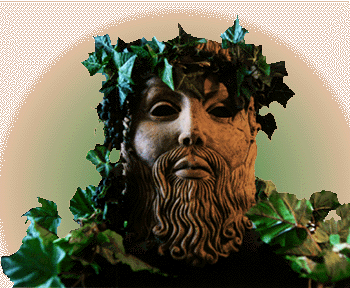
“Juno’s themes are femininity, love, relationships, romance, kinship, time, protection (women and children) and leadership. Her symbols are the cypress, peacocks, cuckoos, luxurious clothing, figs and the moon (or silver items). The supreme Goddess of the Roman pantheon, Juno offers a helping hand in every aspect of our relationships, especially the safety and happiness of women and children in those settings. Juno is also a very modern minded Goddess, taking an active role in public life and finances. Beyond this, She rules women’s cycles, giving Her connections with the moon. Art depicts Juno always wearing majestic clothing befitting the ‘Queen of Heaven.’
According to Roman folklore, marrying today ensures a long, happy relationship. So if you’re planning a wedding or an engagement, or even moving in together, Juno can bless that commitment if you time the big step for today! As part of your devotional ritual, don’t forget to wear special clothing (perhaps something your partner especially likes) to invoke Juno’s attention and loving energy.
If you’d like to connect with Juno’s feminine force, Her leadership skills or Her sense of timing within yourself, eat some fig-filled cookies today (or just some figs), saying,
‘Juno, bring_______to my spirit, my wish fulfill. By your power, through my will.’
FIll the black with whatever aspect of Juno you most need to develop.”
(Patricia Telesco, “365 Goddess: a daily guide to the magic and inspiration of the goddess”.)

“Hera – Queen of Olympus” by Umina
Patricia Monaghan tells us that Juno was “a very ancient Italian Goddess, [and] was originally quite different from the Greek Hera; both, however, were essentially Goddesses of women. When the Greek sky queen came to Rome during the days of cultural assimilation, She merged with the Roman Goddess and Her legends were told of Juno. Juno’s separate mythology was lost, except for the tale that, impregnated by a flower, Juno bore the god Mars – a story never told of Hera” (p. 174).
According to Thalia Took “Juno, or to spell it the Latin way, Iuno, is the Roman Great Goddess, the Queen of the Gods, Sky-Goddess, Protectress of Women, Mother of Mars, Wife of Jupiter, She of the many epithets and a long long history of worship in Rome. She was one of the Capitoline Triad, with Jupiter and Minerva, Who were considered the three main Deities of Rome; She was widely worshipped among the Latins, and Her cult was also important among the Etruscans, who called Her Uni or Cupra. She was an especial protectress of women in marriage and childbirth, and many of Her epithets relate to that aspect, but She could also have a more civic or martial character as protectress of the Roman people.

“Hera” by Canankk
Juno’s name may derive from an Indo-European root with connotations of vitality and youth, and if so would suggest that Her aspect as Birth-Goddess is one of Her oldest. Alternatively, Her name may come from the Etruscan Uni, which means ‘She Who Gives’, and which would refer to Her capacity as a benevolent Goddess of abundance who answers the prayers of those in need.
As each man was believed to have a protective guardian spirit called a genius, so each woman had one called a juno. These guardian spirits (in the plural, junones) may have originally been the ghosts of the ancestors who were believed to watch over and protect their descendents. They were usually represented as snakes (probably relating to the chthonic or underworld aspect of the Dead), and were given offerings on the individual’s birthday at the household altar.
The first days of each Roman month, the calends, were sacred to Juno, as was the entire month of June, which is still named for Her. Five cities in Latium (the region of the Latin tribe) also named a month for Her: Aricia, on the Via Appia; Lanuvium, where She was worshipped as Juno Sospita (‘Juno the Saviouress’), Praeneste (modern Palestrina), Tibur (modern Tivoli, the resort town of Rome), and Laurentum, located between Lavinium and Ostia on the coast. And as Juno is the Roman Goddess of Marriage, it is no coincidence that June is still considered the proper month for weddings.” [1]

“Juno–Supreme Goddess of Women” by MiiSweeTesTSiN
“One of Her most famous names was Moneta, ‘warner’, which was earned many times over: once when Her sacred geese once set up such a squawking that the city was warned of invading Gauls, another time when an earthquake threatened and Juno’s voice from heaven alerted the city, and finally when the underfunded Roman generals came to Juno’s temple for advice and were told that any war fought ethically would find popular (and financial) support. This last effort made Her matron of the Roman mint, which was located in Her temple, and turned Her title into a word for ‘money’.

Most important, Juno was the Goddess of time. Daughter of Saturn, She was a symbol of the menstrual cycle as time’s indicator; Goddess of the new moon, She was worshiped by Roman women on the Calends, or first of each lunar month. In addition to these monthly celebrations, Juno was honored in two festivals: the unrestrained Nonae Caprotinae on July 7, when serving girls staged mock fights under a wild fig tree; and the more sedate Matronalia on March 1 when married women demanded money from their husbands to offer to the Goddess of womanhood” (Monaghan, p. 174).
Like Jupiter, Juno was believed to have the ability to throw thunderbolts.
Also called: Junonis or Iuno.

“Hera’s Eyes” by *Ravenhart
Here, then, is the index for as many of Her aspects as I could find, treated individually; they range from simply descriptive titles such as Conciliatrix that may not have had a use in Her cult, to the more important and unusual facets of Her like Curitis, all the way to separate Goddesses who were assimilated to or equated with Juno, such as the Dea Caelestis of Carthage.
Abeona, Adiona, Caelestis, Caprotina, Cinxia, Cioxia (ruler of the first undressing by the husband), Conciliatrix, Conservatrix, Cuba, Cunina, Cupra, Curiatia, Curitis, Comiduca, Dea Caelestis, Dea Statina, Domiduca,Educa, Edulica, Empanada, Februtis, Fluonia, Gamelia, Inferna, Interduca, Juga, Jugalis, Juno of Falerii, Lacinia, Lanuvina, Levana, Lucetia, Lucina, Martialis, Maturna, Matrona, Moneta, Nacio, Natalis, Nundina, Nutrix, Nuxia, Opigena, Ossipaga (who strengthens fetal bones), Panda, Perficia, Pertunda, Perusina, Populonia (Goddess of conception), Potina, Prema, Pronuba (arranger of appropriate matches), Quiritis, Regina, Rumina, Seispita, Sispes, Sororia, Sospita (the labor Goddess), Supra, Uni, Unxia, Vagitanus, Virginalis, Viriplaca (who settles arguments between spouses), Volumna.” [2]
Sources:
Monaghan, Patricia. The New Book of Goddesses and Heroines, “Juno”.
Took, Thalia. The Obscure Goddess Online Directory, “Juno“.
Suggested Links:
Goddess-Guide.com, “Juno“.
Goddess School, Healing Arts and Pagan Studies with GrannyMoon, “An Hymn to Juno“.
Qu’Aryn Teal Moon. Order of the White Moon, “Juno“.
Revel, Anita. igoddess.com, “Juno: mutual mojo“.
Roman Colosseum, “Myths About the Roman Goddess Juno“.
Wikipedia, “Juno“.






 You Will Need:
You Will Need:

























